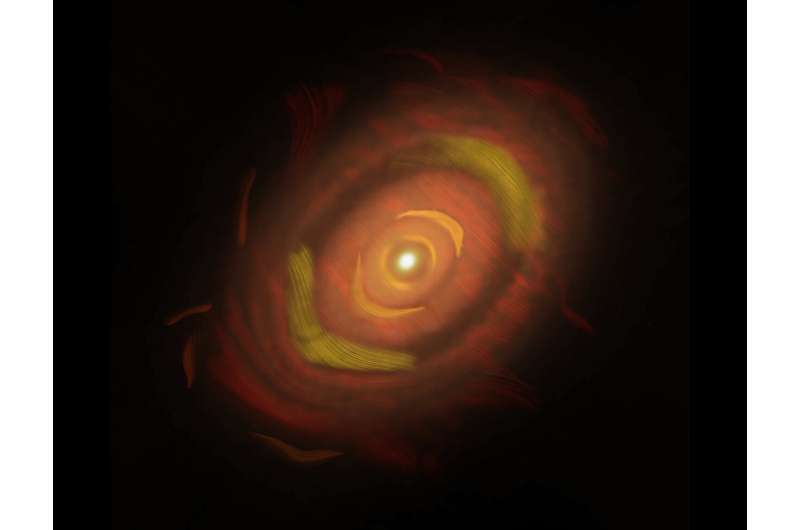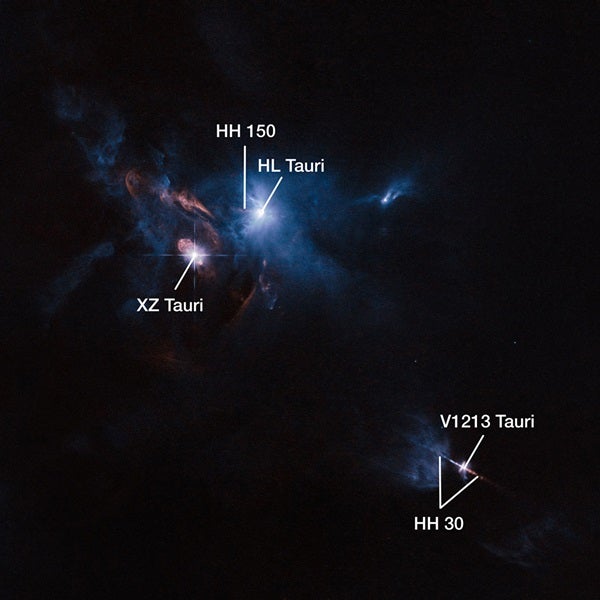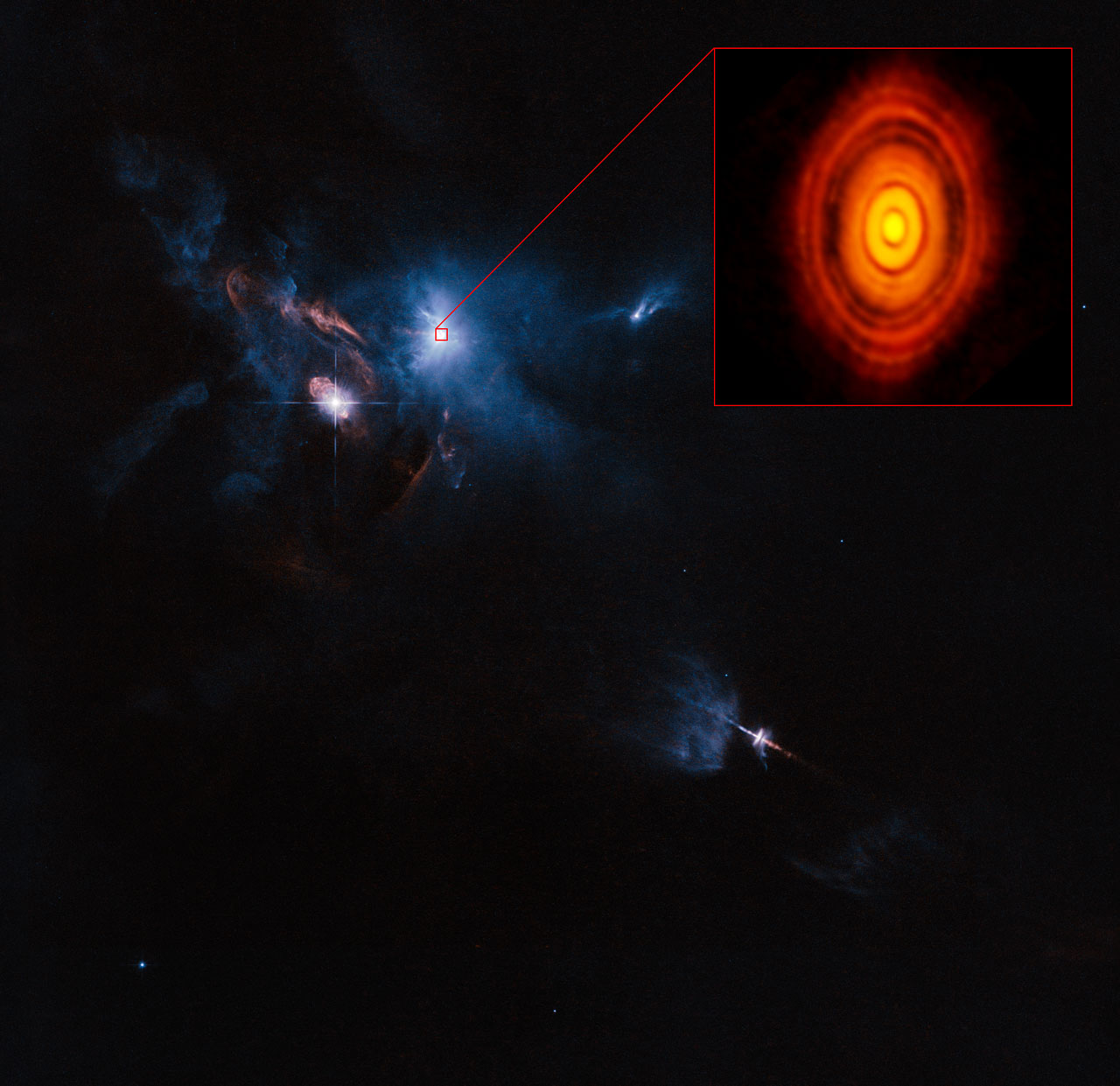Phys.org | 2023 Nov 16
TY4YA JacOne of the primary goals of the Atacama Large Millimeter/submillimeter Array (ALMA) is to study the formation and evolution of planetary systems.
- Rings of dust surrounding HL Tauri, with line patterns showing the orientation of polarized light. A new paper published by Stephens, et al., using ALMA, provides the deepest dust polarization image of any protoplanetary disk captured thus far, revealing details about the dust grains in the disk. Credit: NSF/AUI/NRAO/B. Saxton/Stephens et al.
...
One of the first high resolution images that ALMA captured was of HL Tauri, a young star just 480 light-years away surrounded by a protoplanetary disk. The disk has visible gaps which could be where young protoplanets are forming. Planetary formation is a complex process that we still don't fully understand. During this process, dust grains in the disk are growing in size as they collide and stick to each other, causing them to slowly grow to potentially become objects similar to those within our solar system.
...
One of the ways to study dust grains in these complex structures is to look at the orientation of the light waves they emit, which is known as polarization. Earlier studies of HL Tauri have mapped this polarization, but a new study from Ian Stephens and colleagues has captured a polarization image of HL Tauri in unprecedented detail.
. ...more
arXiv: Aligned Grains and Scattered Light Found in Gaps of Planet-Forming Disk





